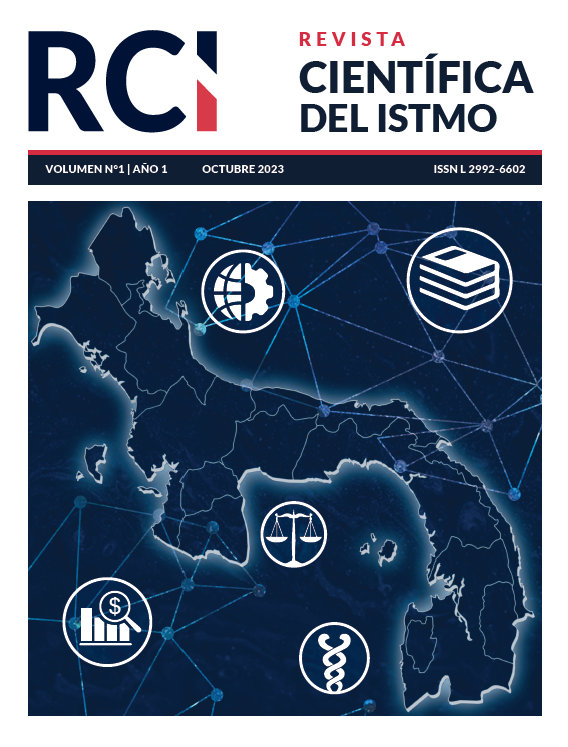Econometric analysis of the factors that affect the competitive success of cooperatives
Keywords:
cooperative, joint venture, econometrics, statistical dataAbstract
The objective of this study is to determine the factors that affect the competitive success of cooperatives in Panama, in a way that contributes to directors and managers to improve their position in the market. Two models were developed to explain the factors that affect the competitiveness of cooperatives: the first, called the Qualitative Model, based on the results of a survey applied to cooperatives, and the second, called the Quantitative Model, based on information from databases. of the Panamanian Autonomous Cooperative Institute (IPACOOP). For the Development of the qualitative Model, ordinal regressions were used applying the SPSS program, the variables that proved to be statistically significant were investment in science, technology and innovation (CTI), investment in training, self-control, transparency, external financing, reserves and personnel. Regarding the quantitative model, and after running the multiple linear regression and testing its assumptions, it was determined that the only variables that turned out to be statistically significant were the level of savings and the amount of the loan payable by the cooperative, explaining around 99.47% of the variations of the dependent variable income. The results of this econometric analysis indicate that to guarantee the competitiveness of cooperatives, it is necessary to invest in CTI, carry out technical training for their directors, executives and collaborators, maintain a self-control system based on financial indicators or indexes, carry out internal and external audits regularly. , manage external financing lines for contingencies, have the necessary reserves for unexpected events, hire suitable technical personnel and make constant reviews of the passive savings rates and the active loans, in order to determine optimal levels of the financial spread of the cooperative.
Downloads
References
Alianza Cooperativa Internacional. (2012). Año Internacional de las Cooperativas, Dossier de Prensa. págs. 1-6.
Alianza Cooperativa Internacional. (2013). Reglamento. ACI.
Bayona, F. (2013). Análisis de los Factores que Influyen en la rentabilidad de las Cajas Municipales de Ahorro y Crédito en el Perú.
Bernal, C. (2010). Metodología de la Investigación. Pearson.
Del Río-Cortina, A., Tamayo Salamanca, Y., & Salazar Morales, H. (2014). Análisis de los factores que inciden en la competitividad de las pequeñas empresas Colombianas. Panorama Económico, Vol(22), 31-48.
Escobar, J., Navarro, A., & Monroy, C. (2011). Estudio de los factores críticos de éxito en las cooperativas de la República Bolivariana de Venezuela. 5th International Conference on Industrial Engineering and Industrial Management, (pág. 51). Cartagena, Colombia.
Fuentes, J., & Blanco, F. (2008). Los determinantes de la Competitividad en las Cooperativas. Revista de Economía Pública, Social, 236-236.
Hernández Sampieri, R., & Mendoza Torres, C. P. (2018). Metodología de la Investigación. Las rutas cuantitativa, cualitativas y mixta. McGraw Hill.
IBM. (2007). Manual del Usuario de SPSS Statistics Base 17.0. EE.UU.: SPSS Inc.
IPACOOP. (2019, 8 de septiembre). Instituto Panameño Autónomo Cooperativo. Obtenido de IPACOOP: www.ipacoop.gop.pa
Juliá, J., García, G., Meliá, E., & Gallego, L. (2010). Los factores de competitividad de las cooperativas líderes en el sector agroalimentario europeo. Cajamar, 7-241.
Lajara-Camilleri, N., & Server-Izquierdo, R. (2016). Cómo se puede mejorar la competitividad de las cooperativas agroalimentarias. Revista de Economia Pública, Social y Cooperativa, 1-19.
Martinez, Batista, F. (2017). Posicionamiento del patrimonio en cooperativas de intermediación financiera frente a las NIIF sobre instrumentos financieros. Revista Clío América, 1-11.
Meliá, E., & Lajara-Camilleri, N. (2007). Factores de competitividad en las cooperativas agrarias Valencianas. La dimensión y la orientación al mercado. 1.
Montegut, Y. (2006). Análisis de los Factores Explicativos del éxito competitivo en las Almazaras Cooperativas Catalanas. Lérida, España.
Panamá América. (2015, 2 de diciembre). Población económica activa forma parte del cooperativismo. Panamá América, pág. 2.
Porter, D., & Gujarati, D. (2009). Econometría. McGraw-Hill.
Prieto, G. (2010). Fiabilidad y Validez. 1-9.
Downloads
Published
How to Cite
Issue
Section
License
Copyright (c) 2025 REVISTA CIENTÍFICA DEL ISTMO

This work is licensed under a Creative Commons Attribution-NonCommercial-ShareAlike 4.0 International License.















